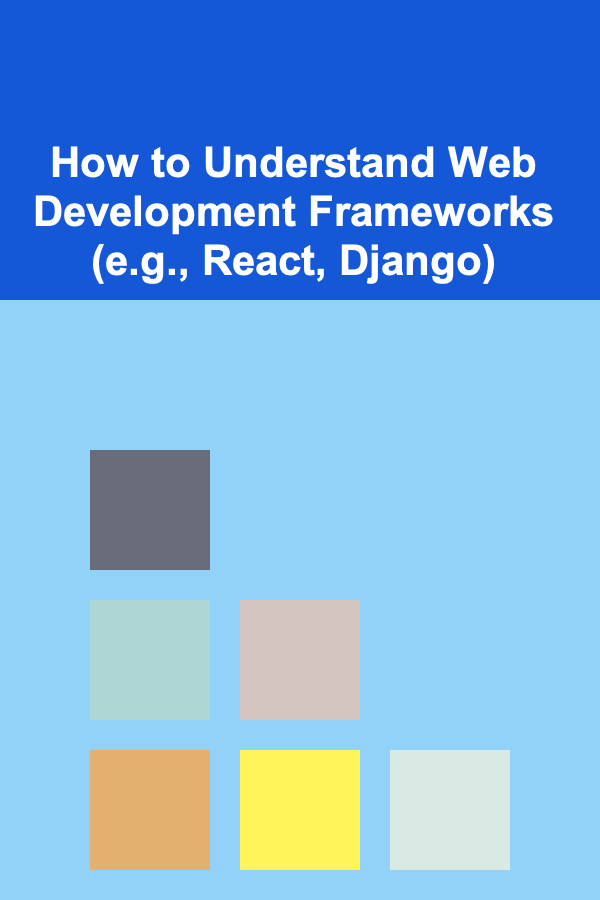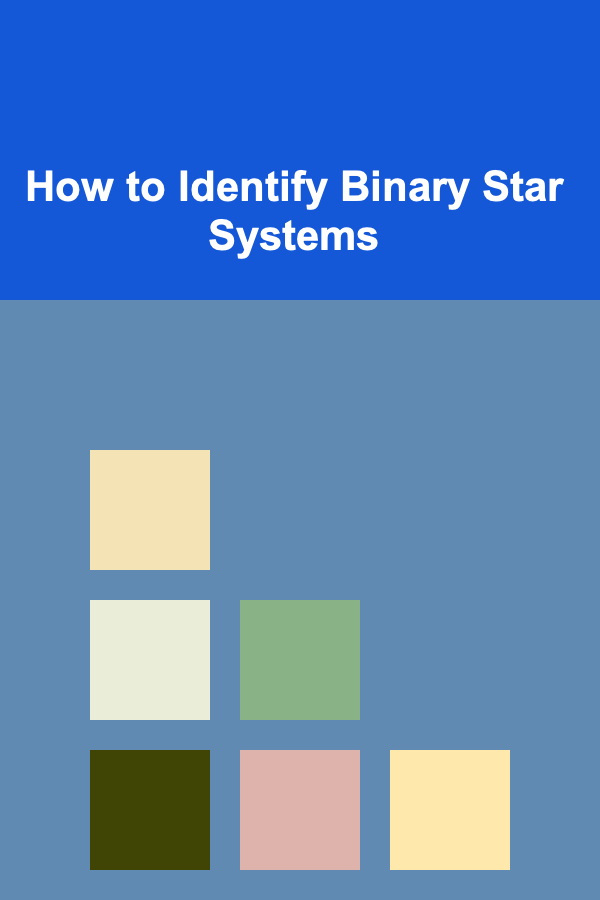
How to Understand Web Development Frameworks (e.g., React, Django)
ebook include PDF & Audio bundle (Micro Guide)
$12.99$8.99
Limited Time Offer! Order within the next:

Web development frameworks play a significant role in modern web development, providing developers with a structured approach to building applications. From front-end libraries like React to back-end frameworks like Django, these tools help streamline development processes, ensure maintainable code, and optimize the overall user experience. However, understanding how these frameworks work, what makes them different, and why they are important can sometimes be a challenge, especially for beginners.
In this article, we'll explore the fundamentals of web development frameworks, dive deep into examples like React and Django, and explain how to approach learning and mastering these tools effectively.
What Are Web Development Frameworks?
A web development framework is a set of tools, libraries, and best practices designed to simplify the process of building and maintaining web applications. Frameworks aim to speed up the development process by providing predefined solutions to common problems such as routing, data management, and UI rendering.
Frameworks typically focus on a particular part of the development stack:
- Front-end frameworks (e.g., React, Angular, Vue) focus on the client-side, dealing with user interface (UI) elements and interactions.
- Back-end frameworks (e.g., Django, Flask, Node.js) manage the server-side, handling data processing, database management, and server logic.
Web development frameworks come with built-in conventions and tools that can help developers avoid reinventing the wheel. For example, rather than writing raw JavaScript to manage state or interact with APIs, developers can use React's powerful component-based architecture.
Why Use Frameworks?
Frameworks provide many advantages, including:
- Consistency: They encourage consistent coding practices and enforce structure, making collaboration easier and reducing the likelihood of errors.
- Speed: Frameworks provide pre-built functionality that speeds up development. For instance, React handles the rendering of UI components, while Django simplifies data modeling and database interaction.
- Security: Frameworks often come with built-in features to address common security concerns (e.g., form validation, authentication, protection against cross-site scripting attacks).
- Community Support: Popular frameworks have large, active communities that provide resources, plugins, and extensions to extend the framework's functionality.
Understanding React: A Front-End Framework
React is a popular JavaScript library developed by Facebook for building user interfaces. Unlike traditional frameworks that offer a full structure for an entire web application, React focuses specifically on the view layer. It allows developers to build dynamic, interactive UIs with components that can be reused across the application.
Key Concepts in React
Components
At the core of React is the idea of components. A component is a self-contained unit that represents a part of the user interface. Components can be as simple as a button or as complex as an entire page. React promotes reusable and modular code, meaning you can define a component once and use it multiple times within your application.
Virtual DOM
React introduces the concept of the Virtual DOM, which is a lightweight copy of the actual DOM in memory. When a change occurs in the application (e.g., user interaction), React updates the Virtual DOM first, compares it to the real DOM, and then only updates the real DOM with the minimal changes required. This makes React applications highly performant.
State and Props
React uses state and props to manage data:
- State refers to data that can change over time and is managed within a component.
- Props (short for properties) are data passed from parent components to child components.
By controlling state and props, developers can build dynamic UIs that respond to user input.
JSX Syntax
React uses JSX (JavaScript XML), a syntax extension that allows developers to write HTML-like code within JavaScript. JSX is not required, but it provides a more intuitive way to define UI components.
return <h1>Hello, {props.name}</h1>;
}
In the example above, JSX is used to return a simple greeting based on the name prop.
Why Learn React?
React has become one of the most popular front-end libraries due to its simplicity, flexibility, and wide adoption. If you want to build dynamic, interactive user interfaces, React is a great choice. Its component-based approach makes it easy to manage complex UIs and allows you to break down your application into reusable components.
Understanding Django: A Back-End Framework
Django is a high-level Python web framework designed for rapid development and clean, pragmatic design. It follows the model-view-template (MVT) architecture pattern, which is similar to the more well-known model-view-controller (MVC) pattern. Django focuses on providing a robust back-end for web applications, including database handling, authentication, and form processing.
Key Concepts in Django
Models
In Django, models define the structure of your database tables. Each model corresponds to a table in the database and specifies the fields and data types for that table. Django provides an Object-Relational Mapper (ORM), which allows developers to interact with the database using Python objects instead of writing SQL queries directly.
class Post(models.Model):
title = models.CharField(max_length=100)
body = models.TextField()
published_date = models.DateTimeField(auto_now_add=True)
Views
A view is responsible for handling user requests and returning appropriate responses. In Django, views are Python functions or classes that take a web request and return a web response, typically rendering a template or returning data in a specific format (e.g., JSON).
def index(request):
return HttpResponse("Hello, world!")
Templates
Templates in Django are used to generate HTML dynamically. Django's templating language allows you to define placeholders for dynamic data, such as user information, and embed logic for conditional rendering.
Django templates are powerful and support logic such as loops, conditionals, and filters.
URL Routing
Django uses URLs to map requests to the appropriate views. The URL configuration is managed using a centralized urls.py file where each URL pattern is mapped to a corresponding view.
from . import views
urlpatterns = [
path('', views.index, name='index'),
]
Why Learn Django?
Django is a robust and secure framework that simplifies back-end development. It follows the "batteries-included" philosophy, providing built-in tools for handling common tasks like user authentication, session management, and security features. Django is ideal for building web applications with complex back-ends, such as content management systems, social networks, and e-commerce sites.
Key Differences Between React and Django
While React and Django are both widely used in web development, they cater to different parts of the application stack.
- React is a front-end JavaScript library that focuses on building dynamic and interactive user interfaces. It is concerned with the "view" layer of the application and does not handle the back-end or data storage.
- Django, on the other hand, is a back-end framework written in Python. It is used for managing databases, handling business logic, and serving dynamic content. It can also be used to build APIs that front-end frameworks like React can interact with.
Despite their differences, React and Django can work together to create full-stack web applications. React handles the front-end, while Django manages the back-end. One common architecture involves Django providing a REST API or GraphQL endpoint, which React can consume to fetch and display data.
How to Approach Learning Web Development Frameworks
Learning a web development framework can be a challenging task, especially when starting from scratch. However, with the right approach, you can master these tools and apply them effectively to build powerful web applications.
1. Understand the Basics First
Before diving into React or Django, ensure that you have a solid understanding of the fundamentals of web development, including:
- HTML and CSS for structuring and styling web pages.
- JavaScript for front-end interactivity (for React) or server-side logic (for Django with Python).
- Databases for understanding how data is stored and retrieved (for Django).
2. Follow Structured Tutorials
Start by working through official documentation and beginner-friendly tutorials. Both React and Django have extensive documentation and communities that provide valuable resources. Follow step-by-step guides to build simple applications and understand how the frameworks work.
3. Build Small Projects
Once you have a basic understanding, start building small projects to apply what you've learned. For example, you can create a to-do list application in React or a blog application using Django. The key is to start small and gradually increase the complexity of your projects as you become more comfortable with the frameworks.
4. Join the Community
React and Django both have active communities that can help you when you encounter challenges. Participate in forums like Stack Overflow, join Discord channels or Reddit threads, and attend local meetups or conferences. Learning from others and engaging with the community can accelerate your progress.
5. Practice Regularly
Web development is a skill that improves with practice. Set aside regular time to write code, experiment with new features, and troubleshoot issues. Over time, you'll become more comfortable and proficient in working with frameworks like React and Django.
Conclusion
Understanding web development frameworks like React and Django is essential for modern web development. React provides an efficient way to build dynamic user interfaces on the front-end, while Django simplifies the creation of powerful back-end applications. By mastering these frameworks, you'll be well-equipped to build full-stack applications that deliver great user experiences.
Learning web development frameworks takes time and practice, but by following a structured approach and applying your knowledge through hands-on projects, you can become a proficient web developer. Whether you're building interactive UIs with React or creating robust back-ends with Django, these frameworks will empower you to create powerful and scalable web applications.

How to Assess Highland Pet Care for Your Pet's Unique Needs
Read More
How to Build a Checklist for Writing a Clear and Concise Resume Objective
Read More
How to Create a Festive and Functional Holiday Kitchen Display
Read More
How to Involve Family Members in Creating a Wellness Space
Read More
How to Rotate Your Fishing Gear Seasonally
Read More
How to Identify Binary Star Systems
Read MoreOther Products

How to Assess Highland Pet Care for Your Pet's Unique Needs
Read More
How to Build a Checklist for Writing a Clear and Concise Resume Objective
Read More
How to Create a Festive and Functional Holiday Kitchen Display
Read More
How to Involve Family Members in Creating a Wellness Space
Read More
How to Rotate Your Fishing Gear Seasonally
Read More